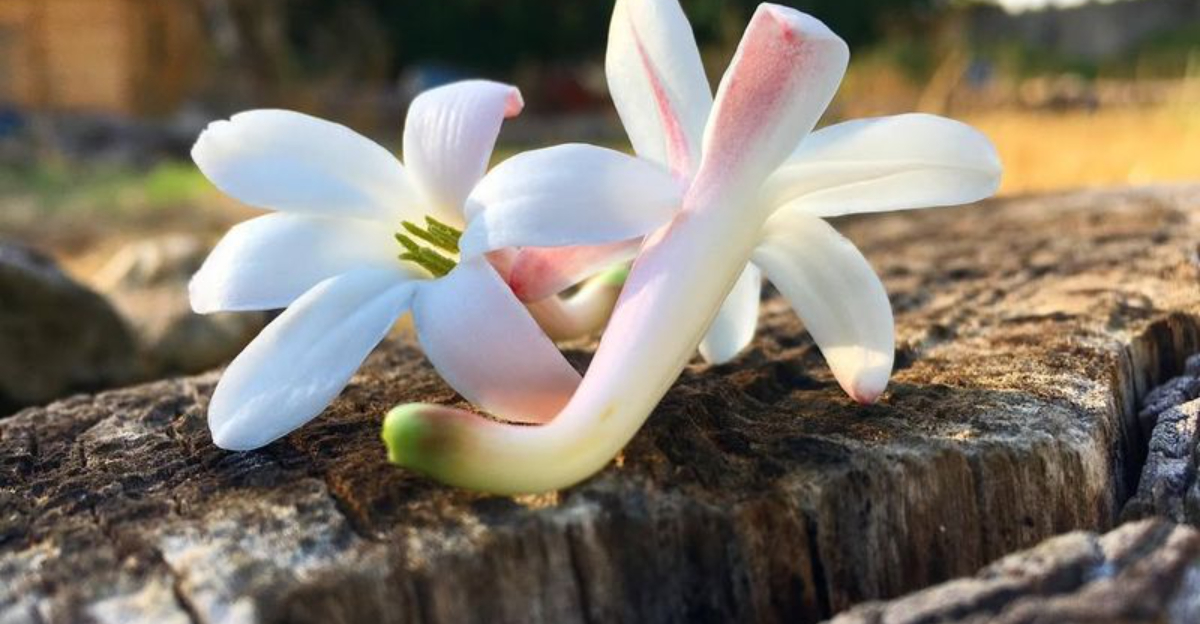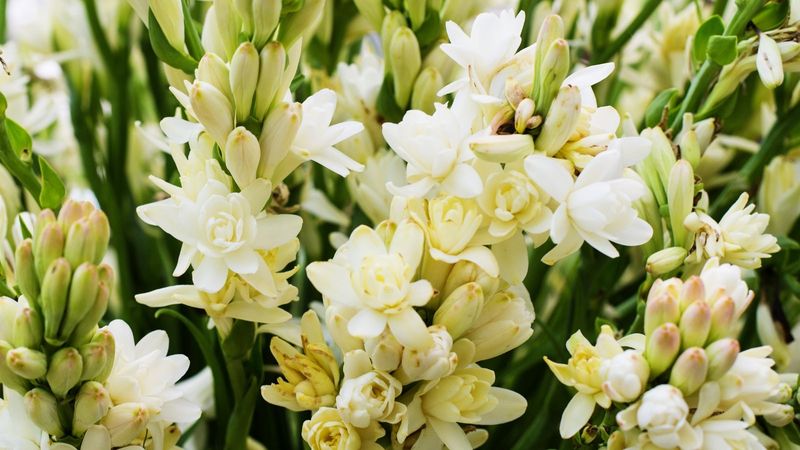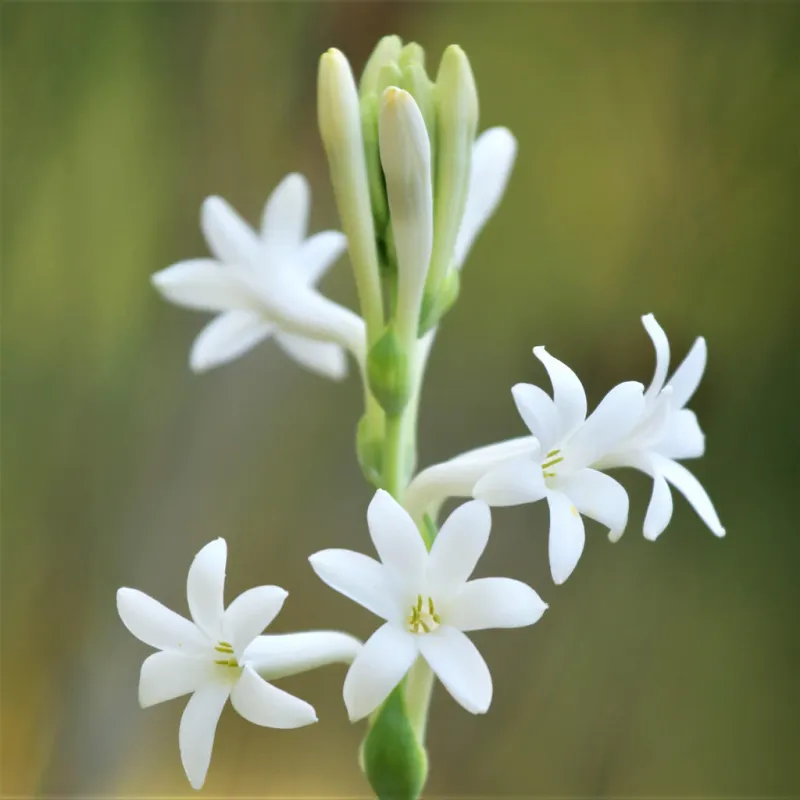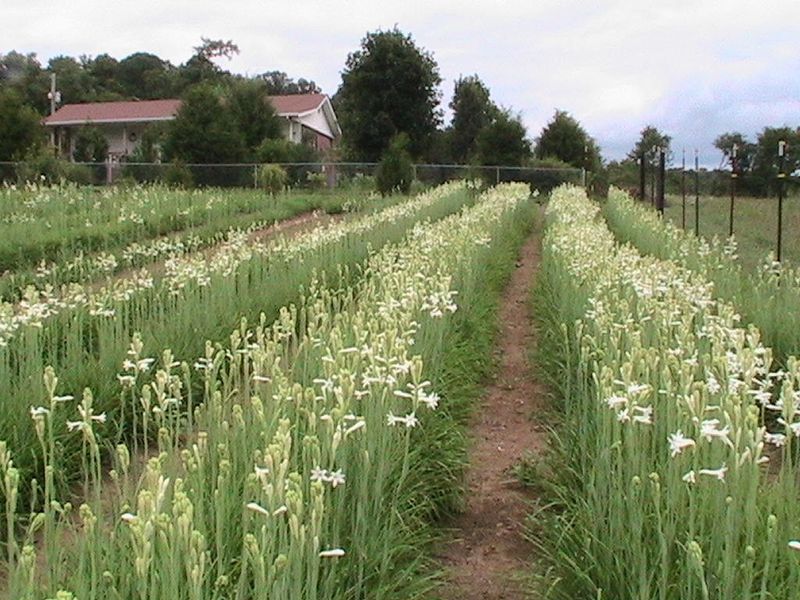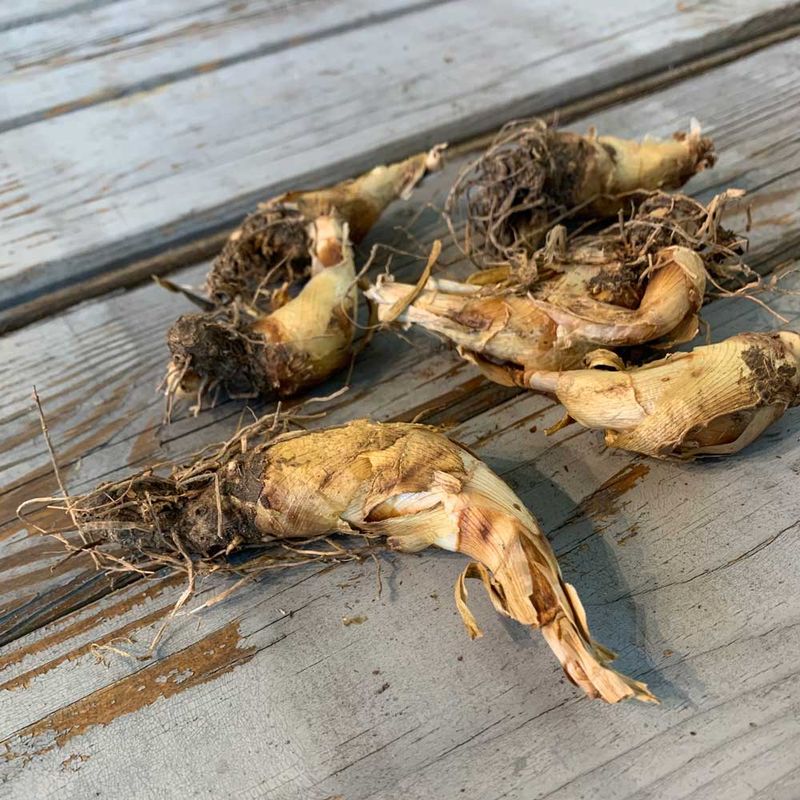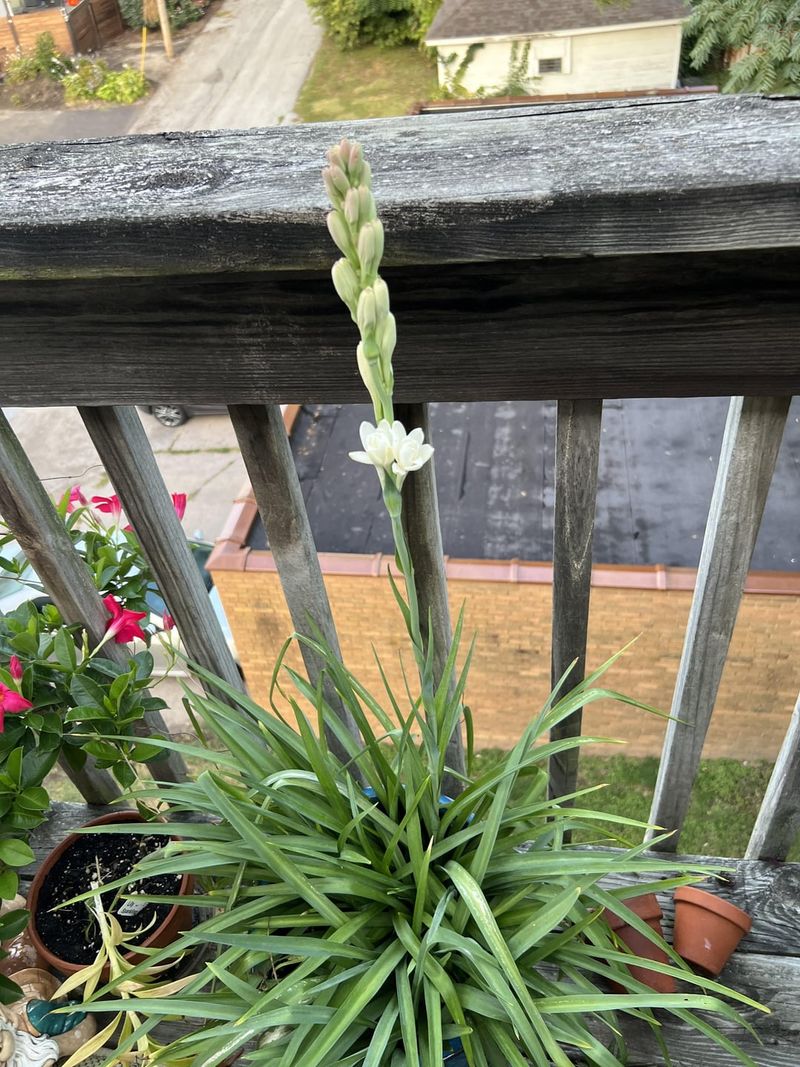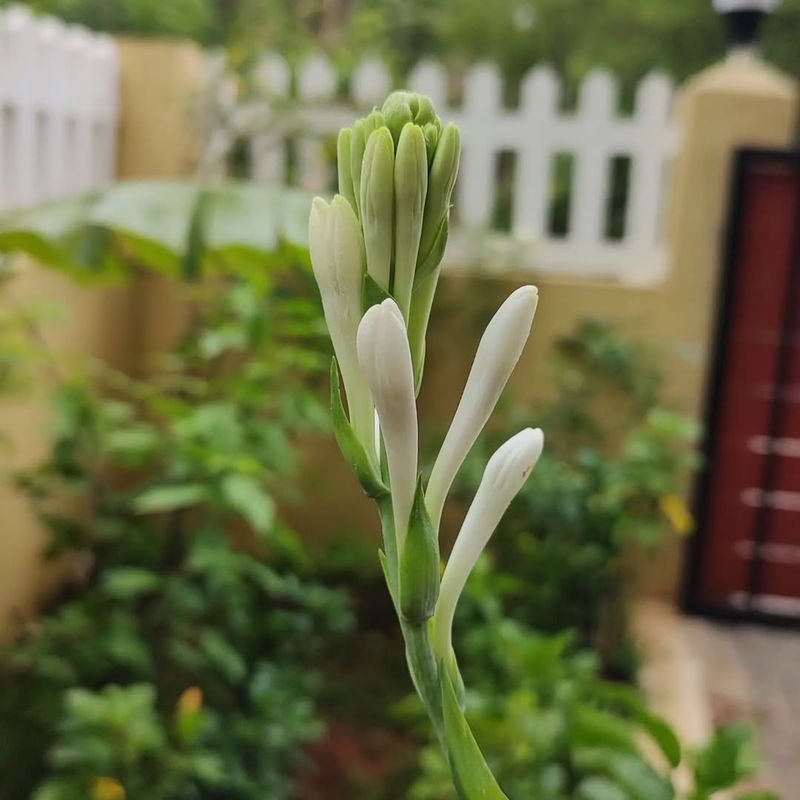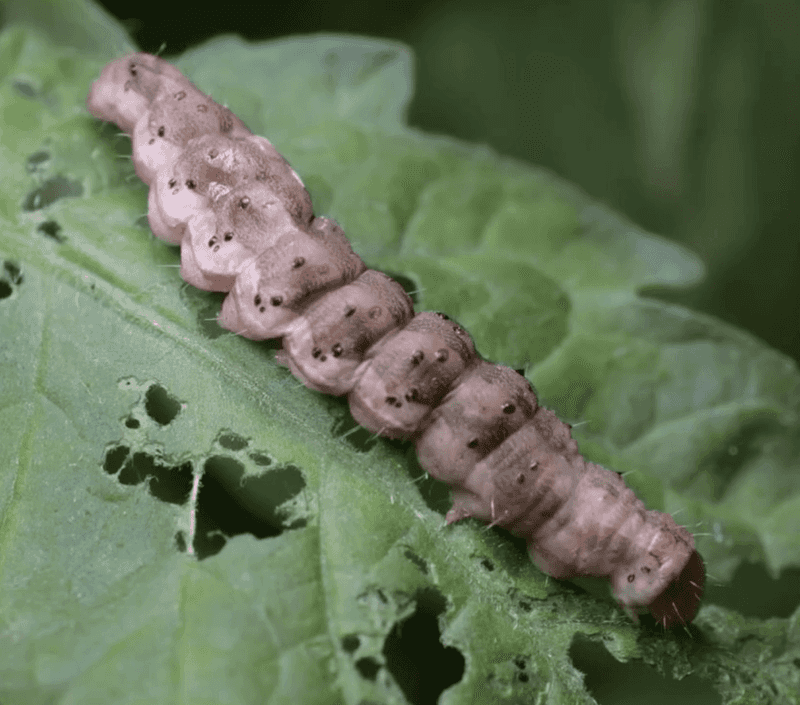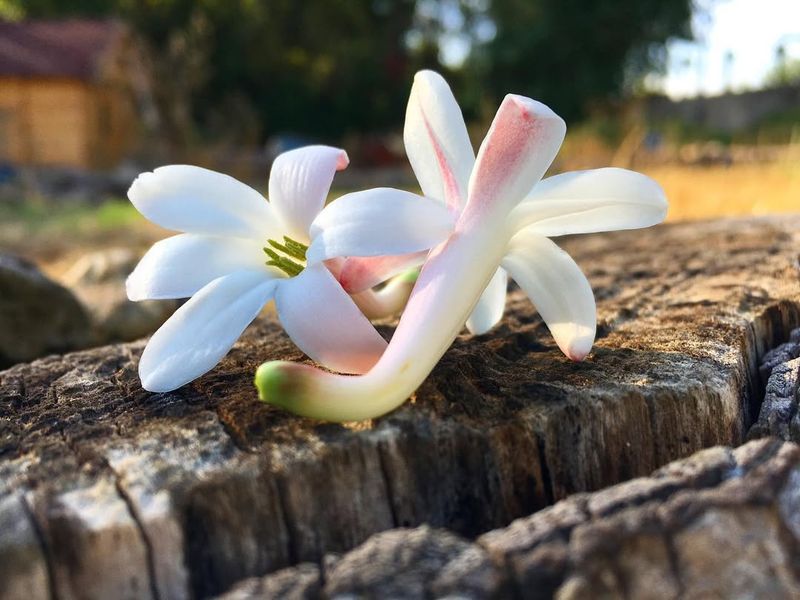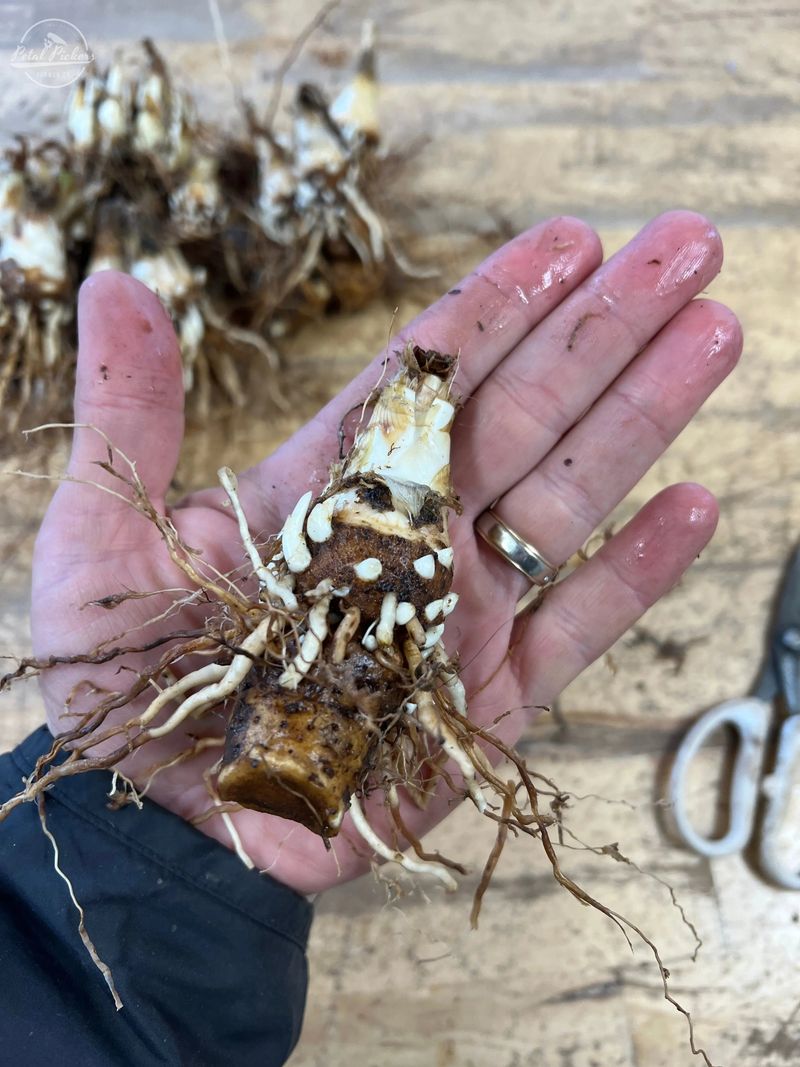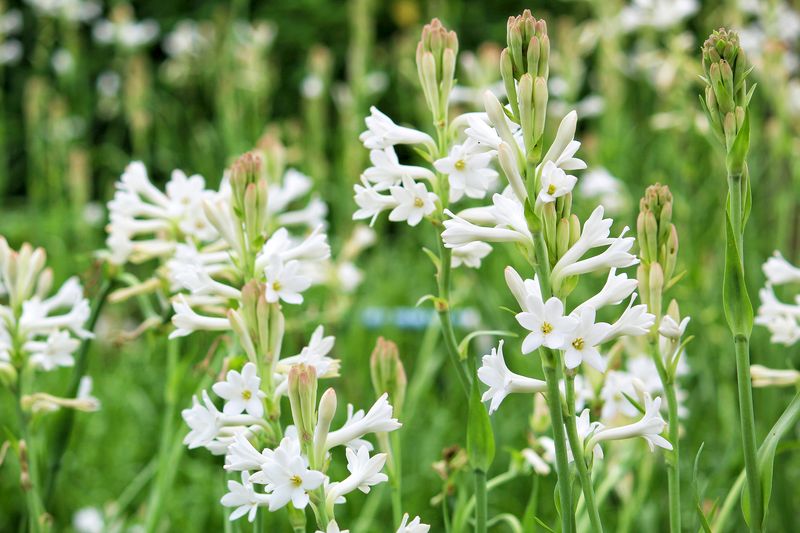Tuberose (Polianthes tuberosa) is a fragrant flowering plant revered for its enchanting blooms. Perfect for both gardens and containers, these perennials brighten any landscape with their elegance.
This guide offers expert advice on planting and nurturing tuberose, ensuring your garden flourishes with these captivating flowers. Journey through ten essential tips to become proficient in cultivating tuberose plants.
From choosing the best varieties to mastering planting techniques and seasonal care, this blog post covers everything you need to know to achieve a thriving tuberose garden. Let’s explore the art of growing these aromatic delights.
1. Understanding Tuberose
Tuberose (Polianthes tuberosa) is a perennial known for its alluring fragrance and striking white flowers. Originally native to Mexico, these plants have gained popularity worldwide.
With tall spikes adorned by clusters of tubular flowers, tuberose adds a touch of elegance to any garden. Their enchanting scent is most potent at night, making them a favorite for moon gardens.
These blooms symbolize purity and are often used in floral arrangements. Understanding their growth habits and requirements is essential for successful cultivation. A well-tended tuberose plant can become the highlight of your garden.
2. Best Varieties to Grow
Selecting the right tuberose variety is crucial for a successful garden. Some popular choices include ‘Mexican Single’, known for its pure white, fragrant blooms, and ‘Pearl’, recognized for its double flowers.
These types thrive in various conditions and can be grown both in containers and open gardens. Each variety has its unique charm, with differences in flower size and fragrance intensity.
Understanding the characteristics of each variety will help you choose the best one for your needs. Experimenting with different varieties can add diversity and beauty to your floral collection.
3. Ideal Planting Conditions
Tuberose thrives in well-drained soil enriched with organic matter. They prefer sunny locations but can tolerate partial shade. Ideal temperatures range from 70 to 90°F (21-32°C) during the growing season.
Proper drainage is vital to prevent bulb rot, so consider raised beds in areas with heavy rain. Adding compost or aged manure improves soil fertility. Tuberose is adaptable to various climates, but they do best in zones 8 to 10.
Ensuring these conditions will lead to healthy growth and abundant blooms. Adapting your garden space to meet these needs enhances tuberose vitality.
4. How to Plant Tuberose Bulbs
Planting tuberose bulbs requires careful preparation. Start by choosing healthy, plump bulbs free from blemishes. Dig holes 2 to 3 inches deep and space bulbs 6 to 8 inches apart. Use a trowel to ensure proper depth and spacing for optimal growth.
After placing bulbs, cover with soil and water thoroughly. This initial watering helps establish roots. For container planting, select a pot with drainage holes and use rich, loamy soil.
Regular watering and sunlight exposure are essential for young plants. Following these steps guarantees a robust tuberose display in your garden.
5. Watering and Fertilization Tips
Consistent watering is vital for tuberose health. Water deeply once a week, allowing the soil to dry slightly between sessions. Over-watering can lead to root rot, so balance is key.
Fertilize every 4-6 weeks with a balanced, water-soluble fertilizer to promote lush growth and prolific flowering. Organic options like compost tea or fish emulsion are beneficial for sustainable gardening.
Monitor soil moisture levels and adjust watering frequency according to weather conditions. Providing the right amount of water and nutrients ensures that your tuberose plants remain vibrant and produce abundant flowers throughout the season.
6. Caring for Tuberose Plants
Pruning and maintenance are essential for healthy tuberose plants. Remove spent flowers to encourage further blooming and prevent the plant from going to seed. Mulching around the base helps retain soil moisture and suppress weeds.
Use organic mulch like straw or bark chips for best results. Regularly check for pests and diseases, removing any affected foliage immediately. Maintaining a clean garden bed prevents fungal growth and encourages a robust bloom cycle.
Providing these care essentials will keep your tuberose plants thriving and looking their best in any garden setting.
7. Common Pests and Diseases
Tuberose plants can fall victim to various pests and diseases. Aphids, snails, and slugs are common culprits, feeding on leaves and stems. Regular inspection and manual removal help control infestations.
Neem oil or insecticidal soap offers an organic solution to pest problems. Fungal diseases like leaf spot and root rot occur in damp conditions. Ensure adequate air circulation and avoid overhead watering to minimize risks.
Applying a fungicide can prevent or treat infections. Keeping plants healthy through vigilant care reduces the likelihood of problems, ensuring a flourishing tuberose garden.
8. When and How to Harvest Flowers
Harvesting tuberose flowers requires timing and precision. Cut blooms early in the morning when they are freshest and most fragrant. Use sharp scissors or pruning shears to avoid damaging the plant.
Trim stems at an angle to maximize water uptake when placed in vases. Regular harvesting encourages more flowers to develop, prolonging the blooming season. Handle flowers gently to prevent bruising, and place them in water immediately.
Preserving the beauty and aroma of tuberose in floral arrangements enhances any indoor space. Mastering these techniques allows for a continuous supply of exquisite blooms.
9. Overwintering Tuberose Bulbs
In colder climates, overwintering tuberose bulbs is necessary. After the first frost, carefully dig up bulbs without damaging them. Allow them to dry in a cool, dry place for a few days.
Remove excess soil and dead foliage before storing them in peat moss or sawdust. Keep bulbs in a temperature range of 40-50°F (4-10°C) until spring. This process protects them from freezing temperatures and ensures they are ready for replanting.
By following these steps, gardeners can enjoy the beauty of tuberose year after year, even in regions with harsh winters.
10. Using Tuberose in Landscaping and Floral Arrangements
Tuberose flowers add elegance to both gardens and floral arrangements. In landscapes, they serve as striking focal points or complement other plants with their height and fragrance.
Their stunning white blooms offer contrast against green foliage, enhancing garden aesthetics. In floral arrangements, tuberose provides a classic touch, suitable for weddings and special occasions.
Combining them with roses or lilies creates exquisite bouquets. Their long-lasting fragrance and beauty make them a favorite among florists and gardeners alike. Incorporating tuberose into your designs elevates any setting, bringing elegance and charm to your space.
